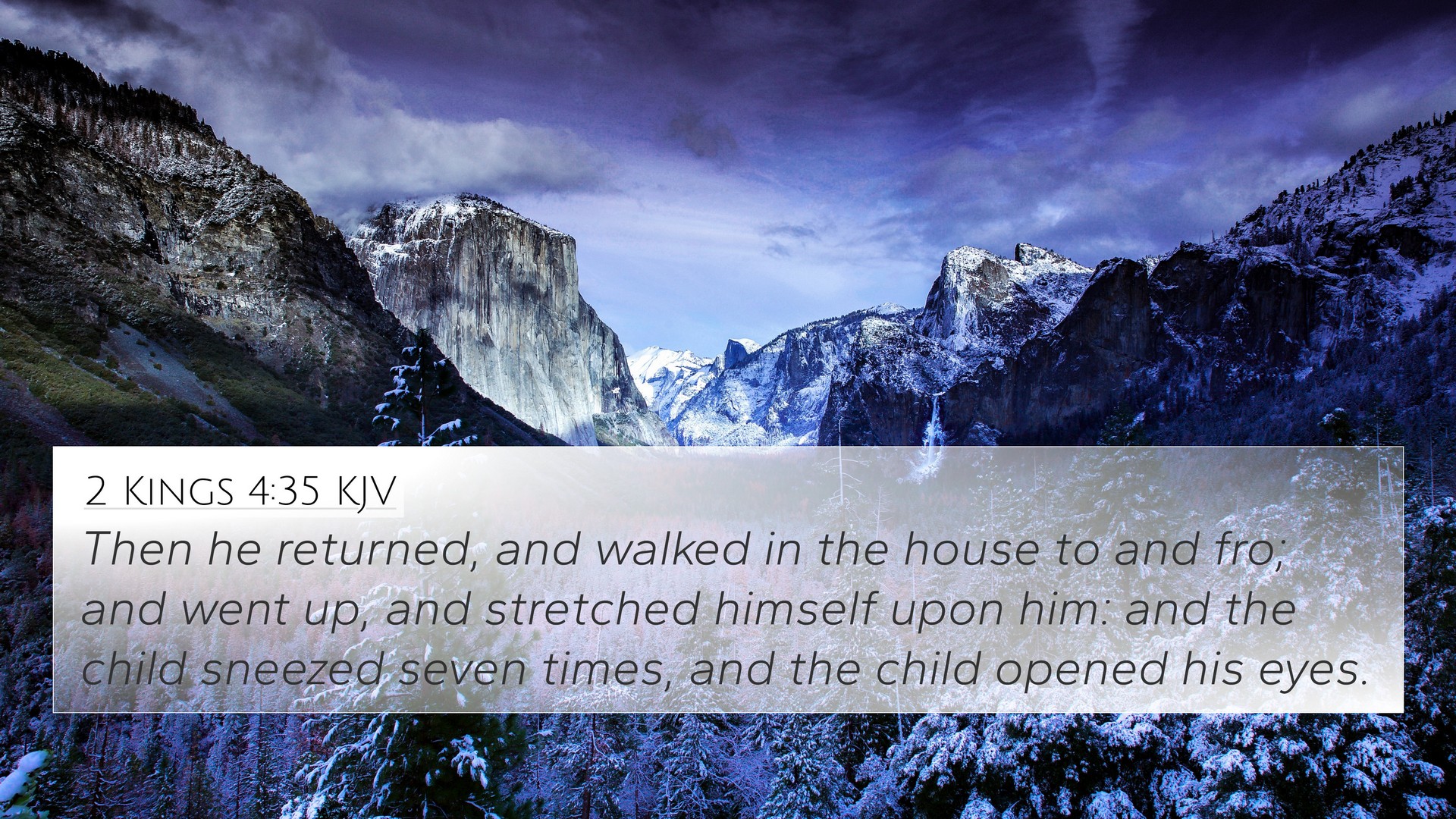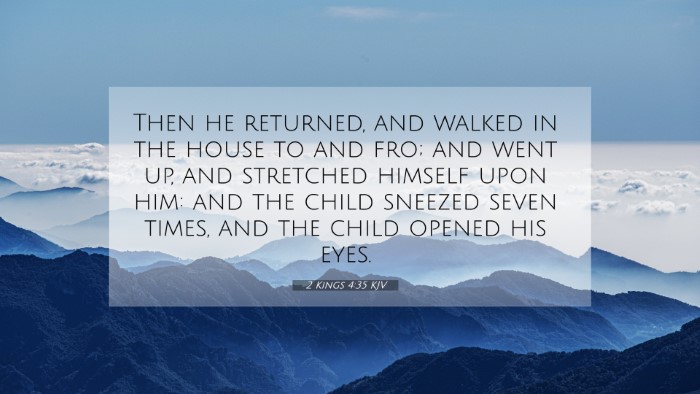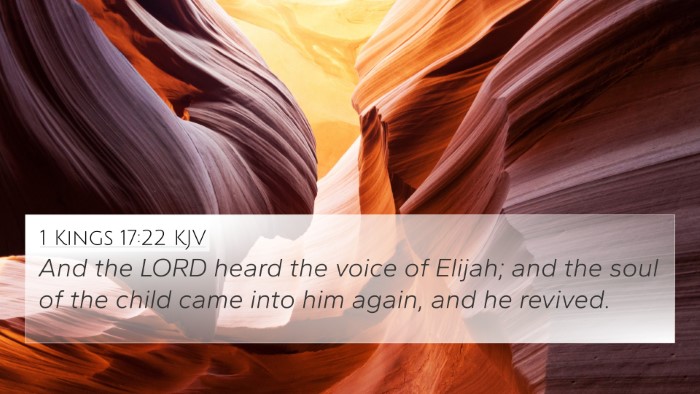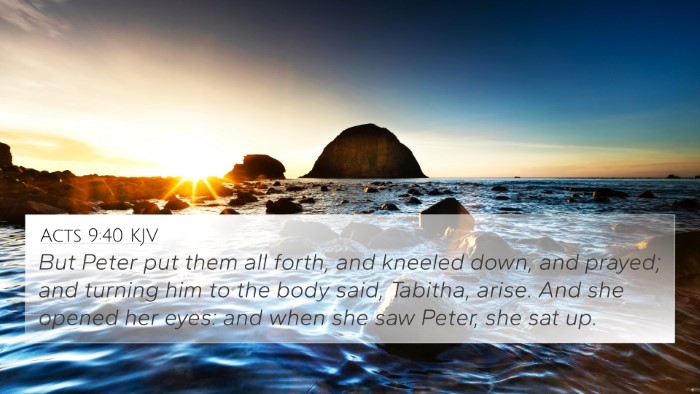Understanding 2 Kings 4:35
Bible Verse: 2 Kings 4:35 - "Then he returned and walked in the house to and fro; and went up, and stretched himself upon him: and the child sneezed seven times, and the child opened his eyes."
Summary of Biblical Interpretation
This poignant moment in 2 Kings 4 captures the miraculous revival of a child by the prophet Elisha. The verse is rich with thematic connections and serves as an important illustration of faith, divine intervention, and the power of prayer.
Key Themes and Connections
- Divine Restoration: The revival of the child signifies God’s capacity to restore life and hope.
- Power of Intercession: Elisha’s actions demonstrate the role of a prophet as an intercessor between God and man.
- Symbolism of Sneezing: The act of sneezing could symbolize a new beginning or the breath of life being restored.
- Faith in Action: The persistence of Elisha reflects the necessity of faith and action in miraculous occurrences.
- Miracles in Daily Life: This event signifies that divine miracles can occur in the everyday routines of life.
Cross-References and Thematic Connections
The following Bible verses relate closely to 2 Kings 4:35, showcasing inter-Biblical dialogue and themes:
- 1 Kings 17:22 - Elijah raises the widow's son, showcasing similar themes of life restoration.
- John 11:43-44 - Jesus raises Lazarus from the dead, highlighting God's power over death and life.
- Mark 5:41-42 - Jesus resurrects the daughter of Jairus, paralleling Elisha’s miracle.
- Matthew 9:18-26 - The account of the woman with an issue of blood and the healing of a ruler's daughter speaks to faith and restoration.
- Luke 7:14-15 - Jesus raises a widow's son in Nain, illustrating the compassion and authority of Jesus, akin to Elisha's miracle.
- Romans 4:17 - Faith in God’s power to bring life from death resonates through the story of Elisha.
- James 5:17-18 - Discusses Elijah's prayers and their effectiveness, connecting the prophet's role in intercessory prayer.
- Acts 9:36-42 - Peter raises Tabitha, demonstrating continuity of divine interventions via faithful individuals.
- Hebrews 11:32-35 - Refers to prophetic miracles, including resurrection feats among God’s people.
- Isaiah 26:19 - Envisions resurrection, linking to the theme of life after death.
Comparative Bible Verse Analysis
This miracle performed by Elisha stands as a testament not only to his prophetic authority but also to God's enduring promise to reign over life and death. The recurring theme of resurrection and revival across Scriptures denotes the interconnectedness of God’s promise through different covenants. Through comparative study, one may find:
- Thematically linking the Old Testament stories of resurrection with the New Testament accounts, enhancing the understanding of God’s continual work.
- Establishing a cross-reference system can help illuminate the symbolism present in these miracles, such as life, death, and resurrection.
- Using a Bible concordance can guide readers in discovering many cross-referenced prayers and miracles found throughout Scripture.
How to Use Bible Cross-References
When studying passages such as 2 Kings 4:35, utilizing tools for Bible cross-referencing can enhance your scriptural understanding. Here are a few points to consider:
- Understand the Context: Always read surrounding verses to gain deeper context.
- Use a Bible cross-reference guide: Identify related scriptures which can provide further insight into the topic.
- Engage in cross-reference Bible study: Delve into the connections thoroughly to appreciate Scripture's cohesive narrative.
- Explore thematic Bible verse connections: Look into overarching biblical themes that resonate with multiple passages.
Conclusion
The revival of the child in 2 Kings 4:35 is not merely an isolated miracle but a part of a broader mosaic of scriptural narratives that speak to the awe-inspiring capacity of God to reclaim and restore life. By exploring cross-referenced themes and utilizing biblical tools, one can appreciate the intricate relationships between passages and understand God’s unchanging nature throughout biblical history.










